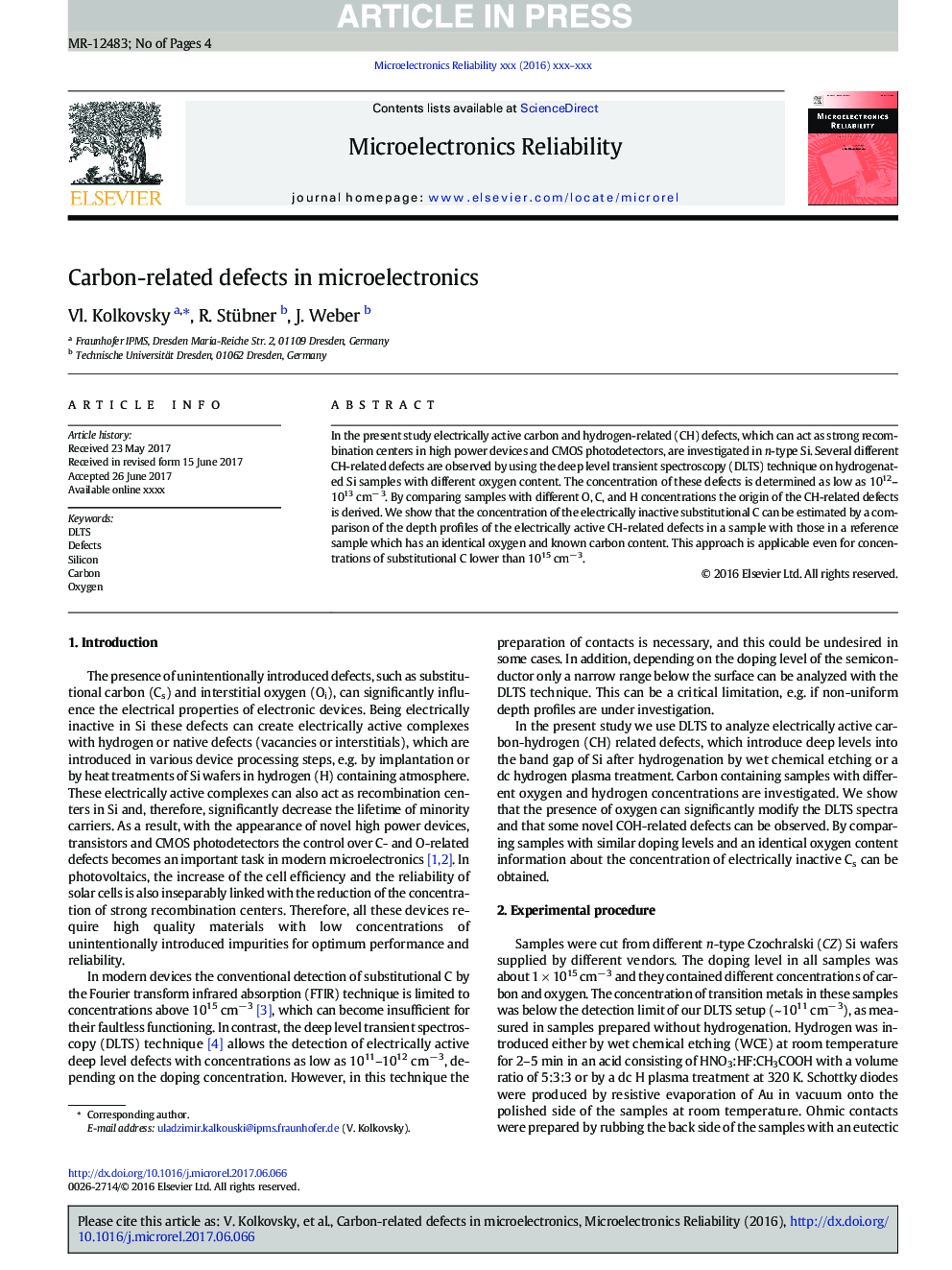| Article ID | Journal | Published Year | Pages | File Type |
|---|---|---|---|---|
| 4971589 | Microelectronics Reliability | 2017 | 4 Pages |
Abstract
In the present study electrically active carbon and hydrogen-related (CH) defects, which can act as strong recombination centers in high power devices and CMOS photodetectors, are investigated in n-type Si. Several different CH-related defects are observed by using the deep level transient spectroscopy (DLTS) technique on hydrogenated Si samples with different oxygen content. The concentration of these defects is determined as low as 1012-1013 cmâ 3. By comparing samples with different O, C, and H concentrations the origin of the CH-related defects is derived. We show that the concentration of the electrically inactive substitutional C can be estimated by a comparison of the depth profiles of the electrically active CH-related defects in a sample with those in a reference sample which has an identical oxygen and known carbon content. This approach is applicable even for concentrations of substitutional C lower than 1015 cmâ 3.
Related Topics
Physical Sciences and Engineering
Computer Science
Hardware and Architecture
Authors
Vl. Kolkovsky, R. Stübner, J. Weber,
